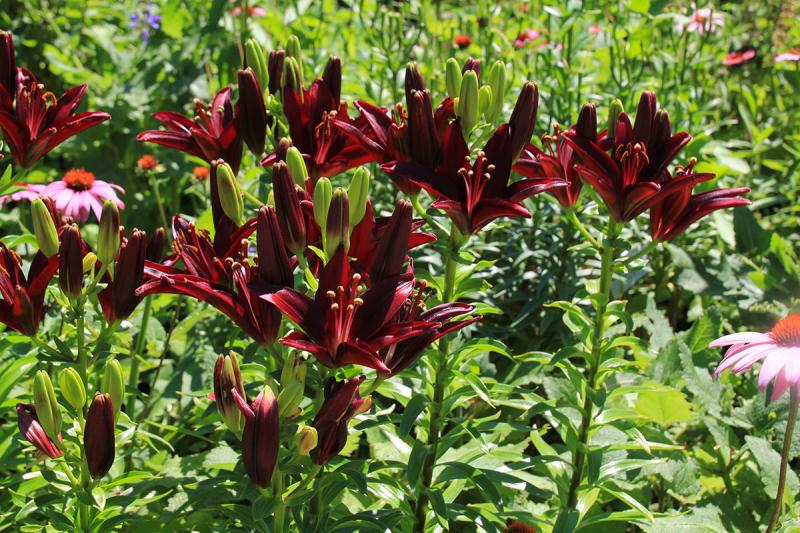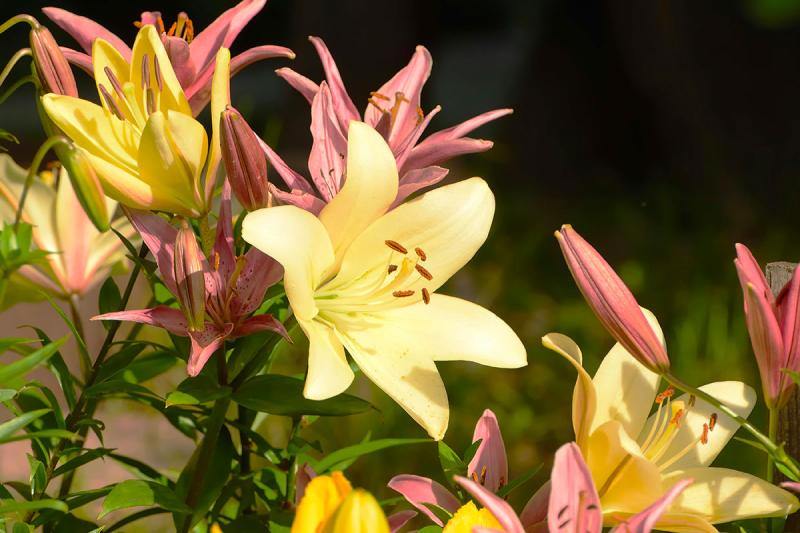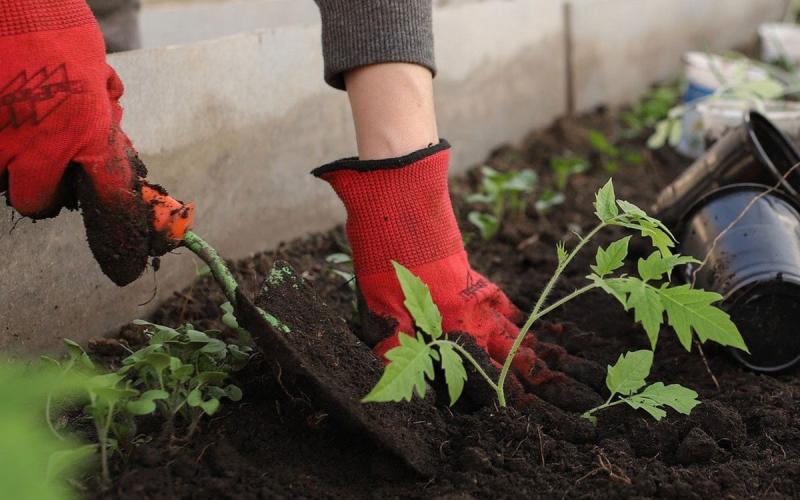Original article by David Graper, former SDSU Extension Horticulture Specialist and Master Gardener Program Coordinator. Updated by Vaughn Reints, SDSU Extension Horticulture Assistant; and Kristine Lang, Assistant Professor, Agronomy, Horticulture, and Plant Science. Special thanks to SDSU Extension Master Gardener Trainee, Max Peterson, for editorial review of this article.
About Lilies

Lilies have long been a perennial staple of many gardens. They are prized for their large, showy, and often-fragrant flowers. There are many varieties of lilies available for home gardens, including inter-specific hybrids that offer a diverse range of flower colors, sizes, and appearances.
There are dozens of different species that include the old standards like Lilium tigrinum, the tiger lilies with their bright-orange flowers spotted with black; Lilium asiatica, with their variety of flower colors; and Lilium orientale, with their sweetly scented flowers – and so many more. Some notable hybrid varieties include the Orientpets – a cross between oriental and trumpet lilies, and the LA hybrids – a cross between Easter and oriental lilies. Some lilies grow to only about a foot tall, while others reach over six feet in height, sometimes with over 20 flowers per stem. Lilies also offer a wide range of flower colors, from pure white, pink, lavender, yellow, orange, red, burgundy, and multi-colored beauties. The species lilies are also quite pretty and interesting in their own right, with their varied flowers and growing habits. There are a few species of lilies that are native to the northern Great Plains region, making them well-suited for local gardens.
Planting and Care

Most lilies perform best in a full-sun location in well-drained soil. If the soil is heavy, plant lilies in a raised bed to improve drainage. Lilies will grow just fine by themselves, but performance can improve when interplanted with taller species, which can offer support and wind protection. If growing lilies in an open and exposed site, provide some support for the taller lilies. Inter-planting with other flowers also helps to keep the garden in bloom for a longer period, because lilies are one-time bloomers each year. While they put on quite a show for a couple weeks each summer, the rest of the growing season can seem rather empty without some other flowers to take over once the lilies have finished blooming for the year. For early summer color, a gardener in the Northern Plains might incorporate shorter Asiatic lilies. If flowers similar to lily flowers are sought, daylilies (Hemerocallis) provide similar blooms, along with contrasting form, foliage, and varied flowering-periods. Although daylilies are often confused with true lilies (Lilium) due to their similar flowers, they are not the same. Daylilies belong to a different plant family, grow from fleshy roots instead of bulbs, have multiple stems, and have distinct flowering-habits. To learn more about daylilies, see the article, Daylily: A Summer Showstopper.
Lilies grow from bulbs, similar to onions, but their bulb scales are much narrower with more separation. Lilies are typically planted about 6 inches deep to give the lilies more Winter protection. The depth also allows new roots to develop around the stem as it grows out of the bulbs, taking up additional water and nutrients. Planting lilies in groups of at least five bulbs creates a more impressive display during bloom than does planting individual bulbs. Lilies can be planted in Spring or early Fall. If planting in Spring, be careful not to break off the developing shoot, which can be rather fragile. To divide an existing patch of lilies, it’s best to do so in early Fall, typically in early September. Allow newly planted lilies time to establish their roots before the ground freezes. You may want to apply a few inches of mulch over the newly planted bulbs to give them some added protection during Winter.
Flowers

Most lilies bloom in mid-Summer, usually in July, but some may bloom later in the season. Lilies make excellent cut-flowers, but some of them are so strongly scented that they might be overpowering in large numbers. Each individual flower typically lasts several days and can remain vibrant for up to a week. Each stem produces multiple flowers, which ensures that new blooms open as the earlier blooms begin to fade. Once all the flowers have dropped their flower petals, deadhead the stem by cutting off the flower spike at the base, just above the stem leaves. Keep in mind that the leaves are the most-important plant component, as they allow the lily to grow the following year and to flower even more than the preceding year. Keep the leaves green and healthy throughout Summer and Fall to ensure they store enough food reserves for Winter and for the following year’s growth and flowering.
Pests
Lilies typically encounter a few pest problems. Rabbits may feed on new shoots and leaves in Spring, and occasional insects might nibble on the foliage. Slugs can also be a problem in a shady or damp site, but generally lilies grow and bloom despite some light feeding. To learn more, view our article on organic pest control.
With proper planting, care, and occasional division, lilies will continue to flourish, adding a unique, aesthetic value to the garden year after year. Whether classic species or newer hybrids, these perennials are sure to provide colorful blooms and lasting enjoyment each season.


